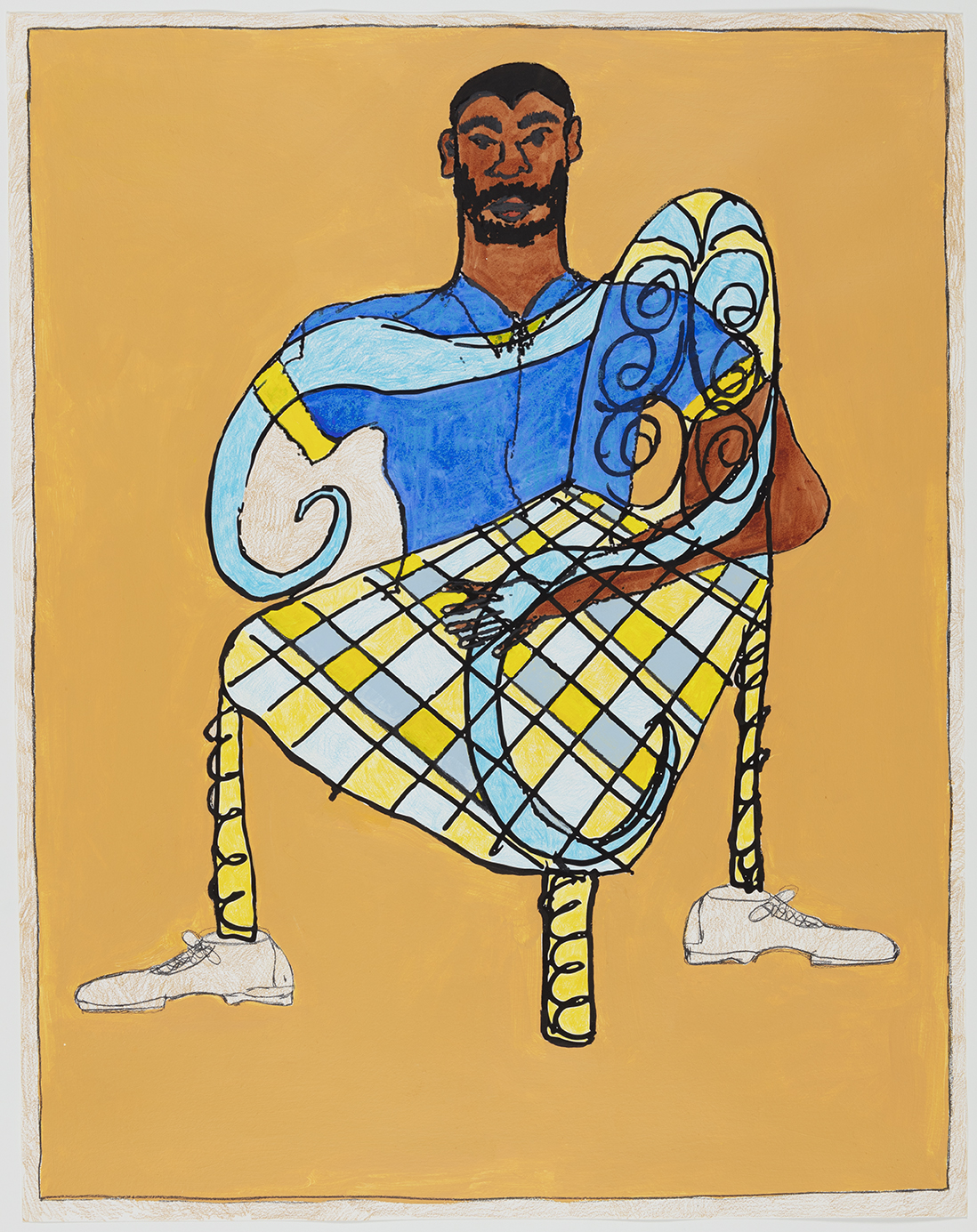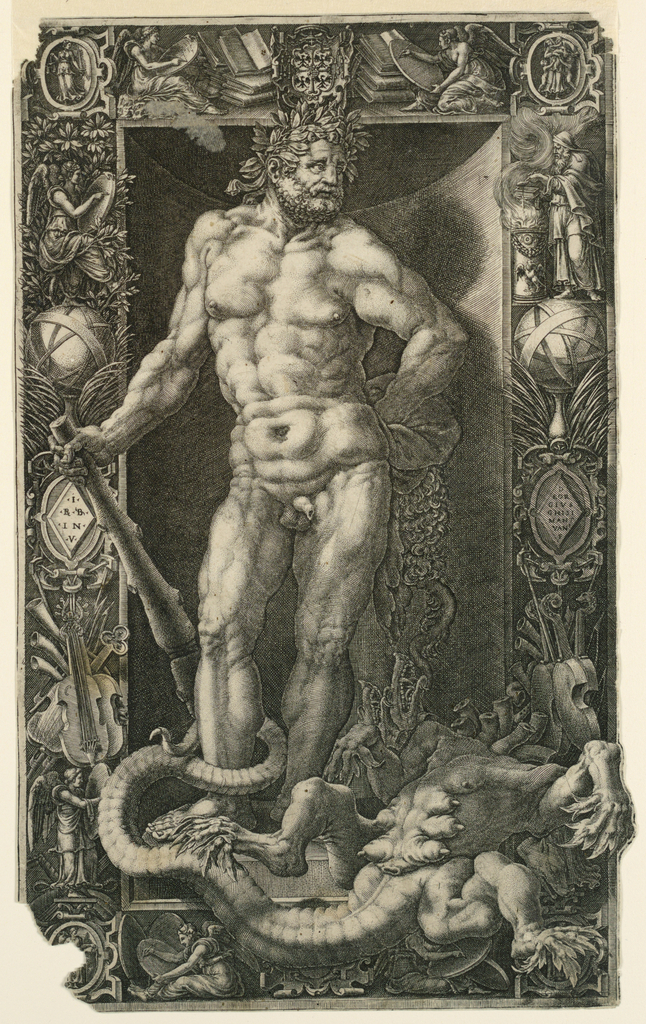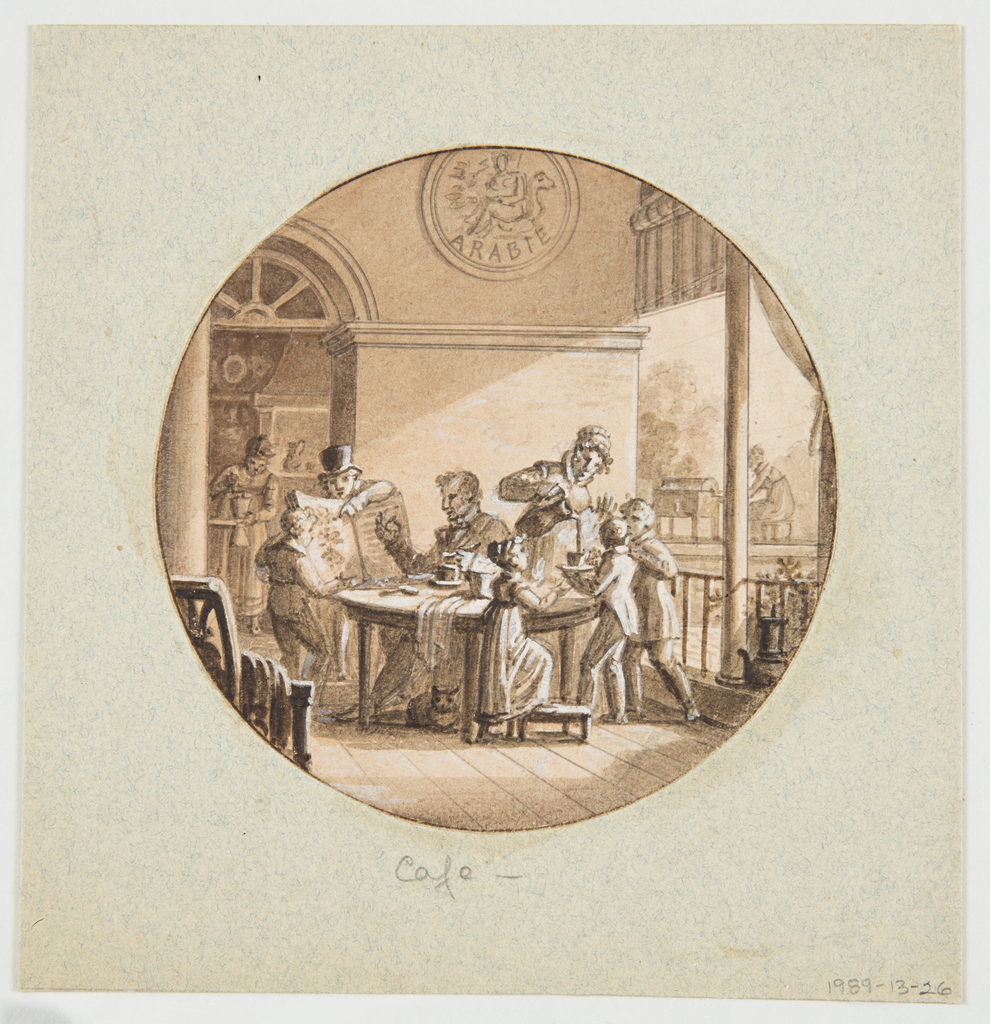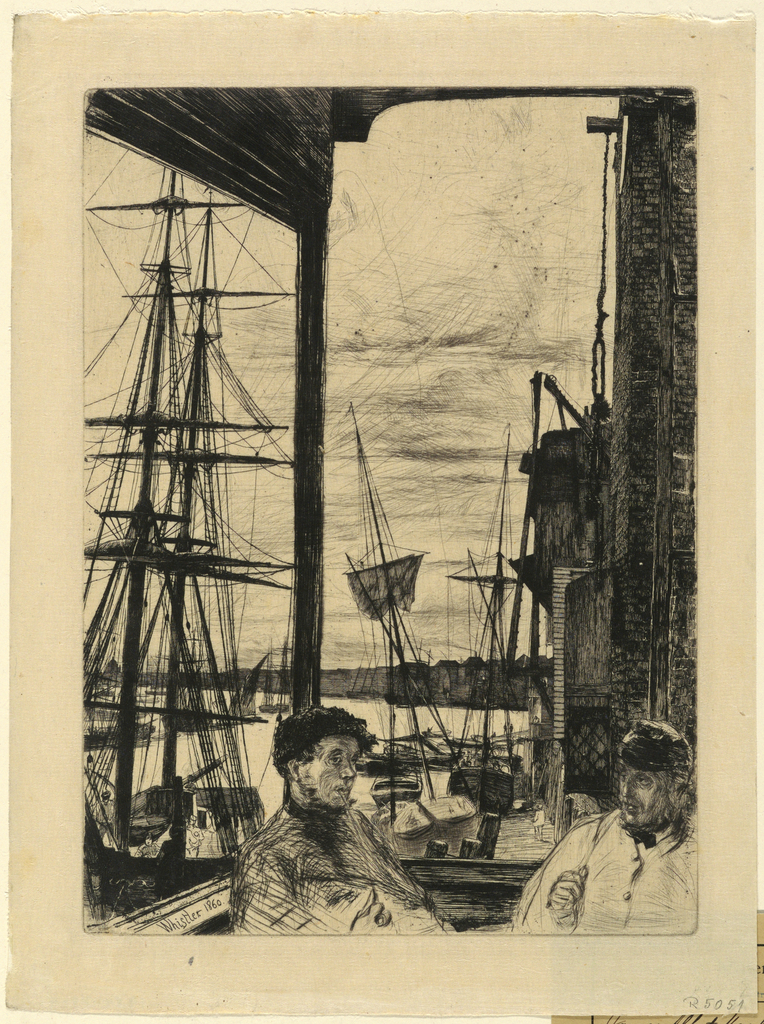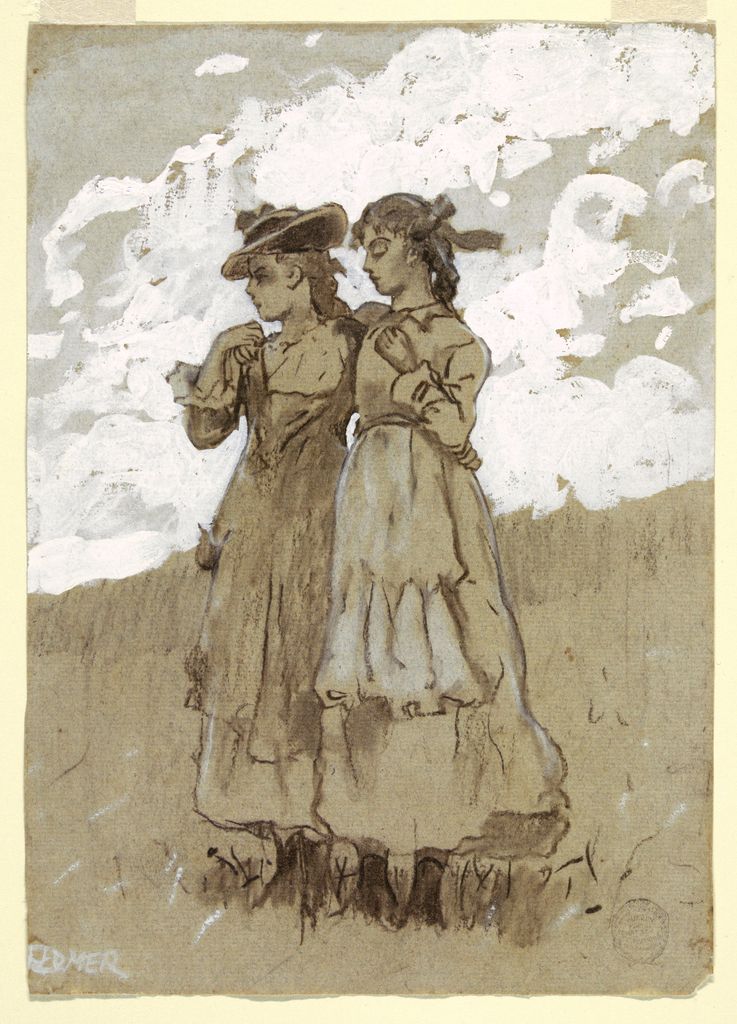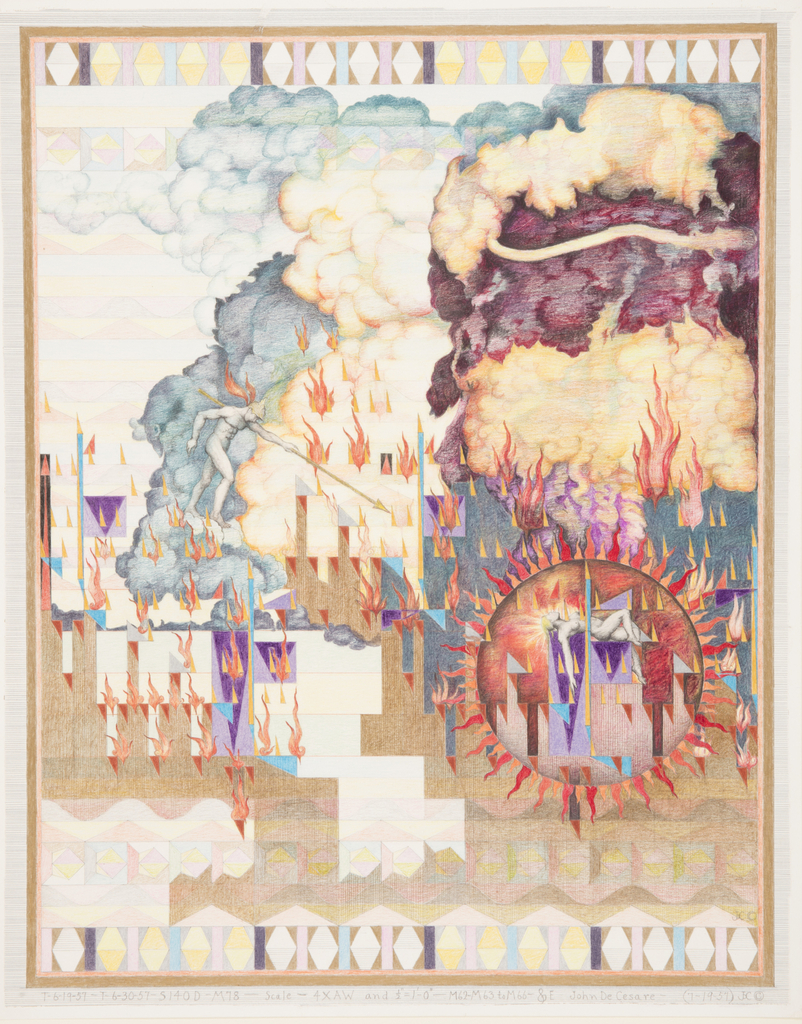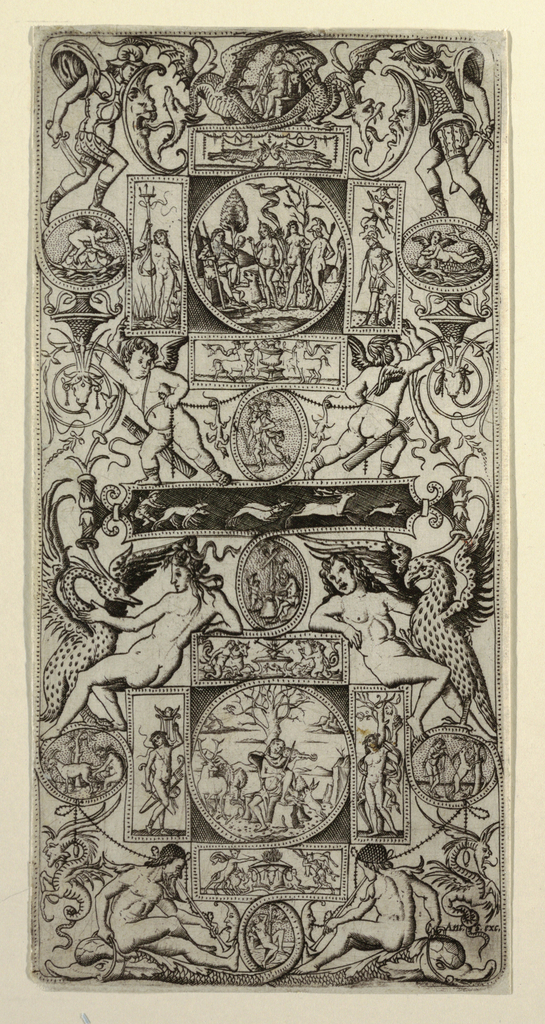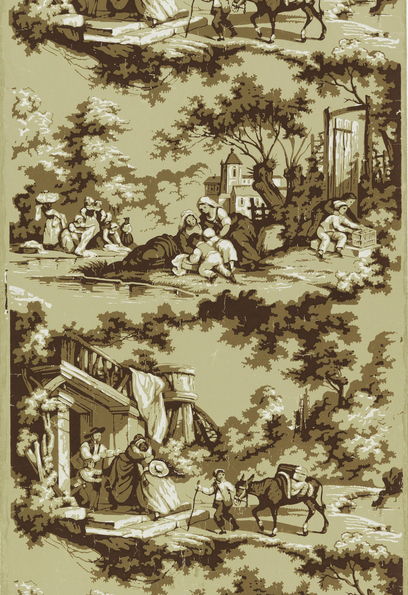“A chair always implies a figure, even if no figure is occupying it.”
This wallpaper format is fairly typical of a new genre that appeared following the upheaval of the French Revolution. The designs consist of one or two landscape views which alternate with one or two smaller secondary elements. These are almost always printed over a spotted or otherwise patterned ground. This particular design contains two each...
In this richly ornamented print from the Drawings, Prints, and Graphic Design department, Giorgio Ghisi (Italian, 1520-1582) portrays Hercules’ success in completing his second labor in his print Hercules Victorious Over the Hydra of Lerna. This print was designed for a frontispiece for artist Giovanni Battista Bertani’s commentary, titled Gli oscuri e difficili passi dell’opera...
Café from the Service des Objets de Dessert, dated 1819-20, was drawn by Jean-Charles Develly as part of a table service for the Royal Sèvres Porcelain Manufactory. The factory was founded in Vincennes in 1740 and later relocated to Sèvres in 1756. In 1800, Alexandre Brongniart (1770–1847) was chosen as the administrator of the factory...
This print by James Abbott McNeill Whistler is part of a series of images the artist produced depicting the East London neighborhoods of Rotherhithe and Wapping in 1859–60. While English painters had traditionally avoided portraying these industrial districts of the city throughout the nineteenth century, Whistler’s Thames series takes for subject the city’s poorest workers...
Winslow Homer, an artist best known today for his facility with watercolor and beautiful seascapes, started as a largely self-taught, freelance illustrator. His skill gained him a position working for the popular mid-19th century periodical Harper’s Weekly. While working for Harper’s, Homer became intimately acquainted with the Civil War. He was sent to the front,...
Though this striking drawing may at first seem to present a colorful abstract fantasy, the design meticulously translates 78 measures of the 1870 music drama Die Walküre into a new complex visual form. Before creating this ornamental design, John De Cesare worked very successfully as an architectural sculptor. He provided sculptural decoration for some of...
Some of the most common elements found in grotesque designs are pairs of contorted nudes known as ignudi (plural of ignudo). In many designs, figures assume postures that are variations or counterposes of their lateral mate’s. Like the grotesque motif itself, these compliant figures invite the artist to invent, exaggerate, and rearrange their parts into endless...
This style of paper is referred to as a figural landscape or landscape figures. Wallpapers in this genre usually contain three to four different landscape views, quite often centered on a theme. They can focus on harbor views, the hunt, or more humble scenes such as this one, which might be called The Homecoming, or...
